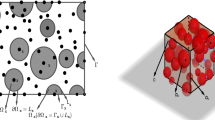Abstract
The newly developed polynomial time-marching technique has been successfully extended to nonperiodic boundary condition cases. In this paper, a special non-periodic boundary condition, nonreflecting or absorbing boundary condition, is incorporated into the pseudospectral polynomial time-marching scheme. Thus, this accurate and stable time-dependent PDE solver can be applied to some open domain or free space problems. The balanced overall spectral accuracy is illustrated by some numerical experiments in the one-dimensional case. The error goes to zero at a rate faster than many fixed orders of the finite-difference scheme. The order of the absorbing boundary approximation is addressed in one-dimension. Also, in the two-dimensional case, a 2nd-order absorbing approximation has been incorporated into the polynomial time-marching scheme with Chebyshev collocation in space. Comparison with the previous finite-difference implementation indicates that the high stability and efficiency of the polynomial time-marching remains. The overall accuracy is mainly limited by the 2nd-order absorbing approximation.
Similar content being viewed by others
REFERENCES
Barnett, S. (1990). Matrices, Methods and Applications, Clarendon Press, Oxford.
Boyd, J. P. (1989). Chebyshev & Fourier Spectral Methods, Springer-Verlag.
Canuto, C. et al. (1988). Spectral Methods in Fluid Dynamics, Springer-Verlag.
Engquist, B., and Majda, A. (1977). Absorbing boundary conditions for the numerical simulation of waves, Math. Comput. 31, 629–651.
Fornberg, B. (1987). The pseudospectral method: comparisons with finite differences for the elastic wave equation. Geophysics 52(4), 483–501.
Goode, G. E. Q. (1993). Numerical Simulation of Viscoelastic Waves, Ph.D. Thesis, University of Calgary, Alberta, Canada.
Gottlieb, D. et al. (1984). Introduction: Theory and Applications of Spectral Methods, SIAM, Philadelphia, pp. 1–54.
Lindman, E. (1975). Free space boundary conditions for the time dependent wave equation, J. Comput. Phys. 18, 66–78.
Luo, Y., and Yedlin, M. J. (1994). Polynomial time-marching for non-periodic boundary value problems, J. Sci. Comput. (in press).
Renaut, R. (1992). Absorbing boundary conditions, difference operator, and stability, J. Comput. Phys. 102, 236–251.
Tal-Ezer, H. (1986). Spectral methods in time for hyperbolic equations, SIAM J. Numer. Anal. 23(1).
Tal-Ezer, H. (1989). Polynomial approximation of functions of matrices and applications, J. Sci. Comput. 4(1), 25–60.
Tal-Ezer, H. (1991). High degree polynomial interpolation in Newton form, SIAM J. Sci. Stat. Comput. 12(3), 648–667.
Tirkas, P. A., et al. (1992). Higher order absorbing boundary conditions for the finite-difference time-domain method, IEEE Trans. on Ant. & Prop. 40(10), 1215–1222.
Trefethen, L., and Halpern, L. (1986). Well-posedness of one-way wave equations and absorbing boundary conditions, Math. Comput. 47, 421–435.
Author information
Authors and Affiliations
Rights and permissions
About this article
Cite this article
Luo, Y., Yedlin, M.J. Polynomial Time-Marching for Nonreflecting Boundary Problems. Journal of Scientific Computing 12, 31–50 (1997). https://doi.org/10.1023/A:1025654303349
Issue Date:
DOI: https://doi.org/10.1023/A:1025654303349




